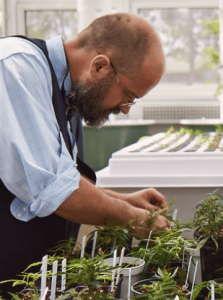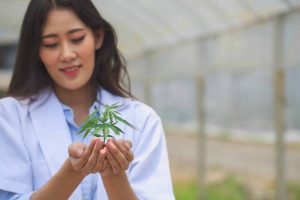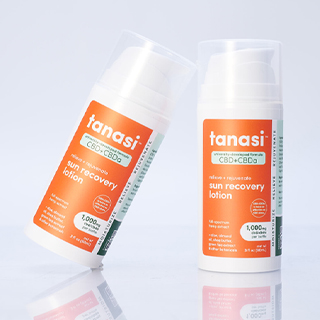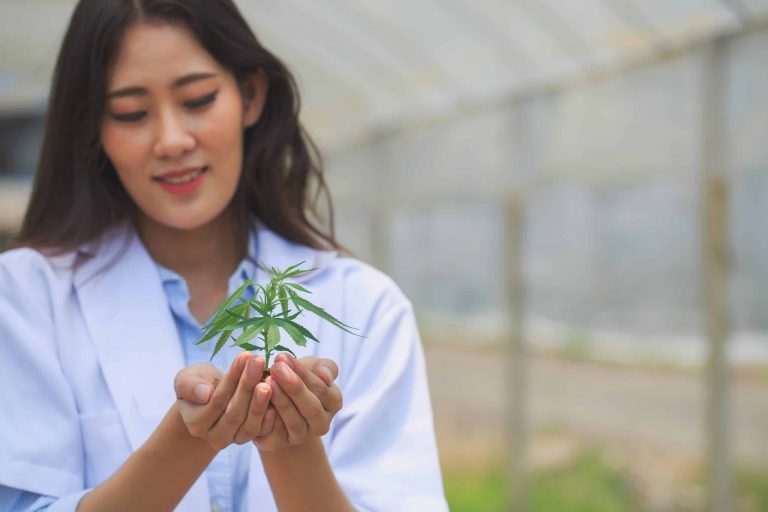What is the Industrial Hemp That Creates our CBD + CBDa Products?
Posted on April 5th, 2023
What is Industrial Hemp and why do we use an organic version of this plant to create our CBD + CBDa products? And how have our views on this plant changed in the last few years? Well, cannabis Sativa is the name given to the species of plant that botanically includes both hemp and marijuana. They are two distinct forms of cannabis and differ in their chemical composition as well as their uses and growth methods.
Farmers grow industrial hemp to make a wide range of products. It is one of the fastest-growing plants, with a growth rate comparable to that of bamboo. Mankind made usable fiber from naturally growing hemp as far back as several millenniums ago. Hemp may be one of the plants that we first cultivated, with evidence of its cultivation dating back to 8000 BC.
Hemp seed smoking was apparently a recreational pastime in Scythia in 480 BC. The legality of industrial hemp, the matter of what made legal hemp, well, legal, varied widely all over the world. Recently, many governments sanctioned using hemp varieties with very low THC concentrations. (Called industrial hemp, that’s the raw plant material we use to source the CBD and CBDa for our patent-pending, 1:1 formulation of these two products. Read more about the superior effectiveness of this formulation here.) In combination, CBD and CBDa deliver effects that are 2X more noticeable than CBD alone. But they don’t get you high. And that’s because industrial hemp doesn’t have enough psychoactive THC. Yet it has lots of other goodness!
Understanding Industrial Hemp
Marijuana is the cannabis plant variety that contains lots of THC, which has psychotropic effects. Hemp, on the other hand, has a variety of field uses. These extend to:
- Food production
- Construction
- Beverages
- Nutritional supplements
- Personal care products, including our brand new anti-aging filler containing CBD + CBDa
- Fabrics and textiles
The plant varieties also have size differences. Most marijuana plants grow to a height of 4 to 8 feet for flower production. The plant also produces the drug that led to legal restrictions. Industrial hemp, on the other hand, can grow to a height of 10 to 15 feet for fiber production, to lesser heights of 6 to 9 feet for seed production, and 4 to 5 feet for its flowers.
People only use the flower of the marijuana plant. Meanwhile, they use industrial hemp for its fiber, seeds, and flowers. THC is abundant in marijuana, while in hemp, it is present at 0.3% concentration. Both plants contain more than a hundred other cannabinoids. Nevertheless, in hemp, the predominant cannabinoid is CBD, and it is the low percentage of THC that makes industrial hemp legal.
Legal Hemp and (Mostly) Illegal Marijuana
Marijuana classifies as a Schedule 1 controlled substance, and this led to bans on its manufacture, distribution, and possession. Any cannabis that has more than 0.3% of THC is the same as marijuana as far as law enforcement is concerned. These plants have THC concentrations of between 10% and 30% on average, though higher levels are possible. Hemp cultivation became legal in the United States under the name industrial hemp as defined in the farm bill of 2014.
This was mainly for research purposes. A 2018 farm bill separated hemp from its association with marijuana. This effectively legalized hemp at the federal level. It also became widely accepted as a plant that manufacturers can grow without any restrictions on the end use of its products.
That was a big deal, since in the 1960s, the industry grew industrial hemp as an agricultural crop used for its seeds, and fiber. Plus, they discovered used for byproducts, including oil, seed cake, and hurds. Hemp has a very high CBD concentration, a compound that offers potential therapeutic benefits. Although it is a cannabis variety, its almost negligible THC content means it’s not psychotropic. So this compound has no connection to what gave cannabis its bad name.
Hemp in America
Hemp grew in America for centuries, thanks to its indigenous people and European colonists. In many states, its growth was even mandatory; in fact, rumor has it that President George Washington grew hemp at Mount Vernon. The fiber of hemp is very durable and great for making rope, paper and cloth. It was only in the early 20th century that Mexican immigrants introduced marijuana for its medicinal and calming benefits. At that time, its psychoactive effects became a growing source of concern. Hemp’s close association with marijuana led it to fall under suspicion. So it became a banned substance in 1937.
The Marijuana Tax Act in 1937 put a tax on the sale of cannabis. This Act over turned in 1969, and Congress repealed it in 1970. Hemp products were still coming in as imports from other countries, but their production remained illegal. The Philippines was a major supplier of hemp products until it fell to the Japanese in 1942. After that, the government asked farmers in the United States to grow fiber hemp under tax stamps issued to them. The mandate saw the cultivation of 400,000 acres, and hemp fields continued being commercially planted until 1957.
Path to Legality
Supporters of cannabis made great efforts in the 1990s to have hemp and marijuana reclassified because of their possible medical benefits. It was only in 1996 that California legalized marijuana use for medical purposes. Prior to 2014, farmers could grow industrial hemp only with a permit from the DEA and were subject to stringent checks of their produce. It is only in 2014 that the Farm Bill allowed industrial hemp growth without any need for permits or checks by the DEA. The Agricultural Improvement Act of 2018 created even more room for the cultivation of hemp. It also lifted all the restrictions for its sale, transportation, and possession that were part of the earlier 2014 bill. Thus, paving the way for legal hemp. Nevertheless, there is still a somewhat tight regulation of CBD, one of the products from industrial hemp.
CBDa and CBD, Trendy Products from Legal Hemp
Let us talk a little bit about CBD or cannabidiol, a chemical amalgam that occurs naturally in cannabis plants. Now, cannabis plants, (both hemp and marijuana) contain hundreds of cannabinoids; THC and CBD are just some of the most famous ones. THC is psychoactive, while CBD is not. Cannabis that has a THC content of less than 0.3% classifies as legal hemp. A higher percentage than that legally becomes marijuana for all intents and purposes.
The Hemp Farming Act of 2018 legalized the cultivation of hemp plants that had a THC content of less than 0.3%. This led to hemp is no longer affected by the Controlled substances Act. Allowances for the commercial cultivation of hemp were extended. Hemp production became legal in all US territories and also on land reserved for the native Indians. So, all regulation earlier done by the DEA now falls to the Department of Agriculture. Hemp is legal now, but all hemp extracts still do not enjoy this legal status, though CBD oil is indeed fully legal.
On Hemp Cultivation
The primary purpose of growing legal hemp is for fiber, seeds, and flowers. But the growth method will determine the plant products’ end uses.
Farmers plant hemp densely when growing for its fibers, to naturally discourage branching and flowering. These plants will grow tall and have less plant and leaf material. They can grow to a height of 10 to 15 feet. The fibers extracted from the plant are used for making textiles, core fibers, paper, insulation, and even concrete fiberboard and other oil absorbents.
Hemp plants grown for their seeds reach a height of 5 to 9 feet and need harvesting before the seeds scatter. The seeds can then become hemp oil, seedcake or food. Hemp grown for flowers must be well-spaced and allowed to become bushy with wide branches, to promote flower and bud growth. Harvesting is labor-intensive and uses the flowers to extract plant resins and other products used for their nutritive values. Hemp planting takes place between March and May in the north and matures in three or four months.
Hemp is environmentally friendly as it decreases the use of land, requires fewer pesticides and no herbicides, and is a carbon-negative raw material. 70% of hemp worldwide is of Chinese origin, with France chipping in at 25 percent. Hemp became legal to grow in the United States in 2019 after became an agricultural commodity rather than a Schedule 1 drug.
Legal Hemp Today
The legalization of hemp cultivation in the United States started in 2009 when the state of Oregon approved licenses for growing industrial hemp. This spread to Colorado after marijuana became legal.
The Agricultural Act of 2014 created a Hemp Farming Pilot Program allowing educational institutions to grow hemp without consent from the DEA. By the end of 2017, 34 states had industrial hemp programs, and it is now legal to grow in 47 states, especially for CBD.
There is still resistance in the market to the sale of hemp products as many financial institutions still do not accept that hemp and marijuana are now separate from each other. Even so, hemp products now have over a billion dollars in sales, largely propelled by the growing demand for CBD and CBDa.





